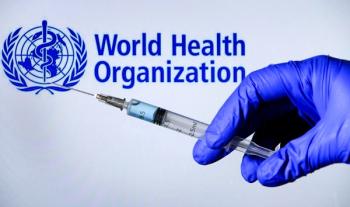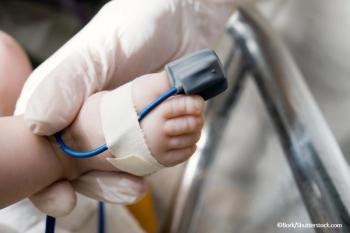
Editorial Comment: Foreign-born Latinos With HIV/AIDS–Improving Clinical Care
Although the observations of del Rio and colleagues1 stemming from their study of foreign-born, HIV-infected Latinos are limited to a certain geographic area, their findings should stimulate further research to better understand and provide better health care to ethnic and minority groups living with HIV/AIDS in the United States.
Although the observations of del Rio and colleagues1 stemming from their study of foreign-born, HIV-infected Latinos are limited to a certain geographic area, their findings should stimulate further research to better understand and provide better health care to ethnic and minority groups living with HIV/AIDS in the United States.
Since the advent of the HIV epidemic, certain ethnic and minority groups have represented a disproportionate number of HIV/AIDS cases in the United States compared with the overall US population. And this trend continues: as of December 2004, Hispanic persons accounted for 20% of those living with AIDS but represented only 13% of the US population. In the 35 states and territories with confidential name-based HIV-infection reporting, the CDC estimated that there were 462,792 people living with HIV/AIDS at the end of 2004. Of these, Hispanic persons represented 16.9%.2 A study of New York City adults in whom AIDS was newly diagnosed from 2002 to 2004 found that 30.8% were Hispanic.3
The study results reported by del Rio and colleagues describe a "snapshot" generated from nearly 2 years' worth of patient data that reveals the epidemiologic and clinical features of 75 foreign-born Latinos at an urban HIV clinic in Atlanta. In this study, the majority of Latinos are of Mexican heritage, and the data pertain to this particular population.
Acknowledging that the term "Latino" applies to a very heterogeneous ethnic group that includes persons from different countries and cultures, I agree with the authors that "the generalization of results beyond this setting is not possible." However, the many vibrant cultures within the Latino community with its myriad perspectives on health care make the objective of how to provide better medical care to "foreign-born Latinos with HIV/AIDS" even more interesting and important. For example, HIV exposure risk factors, education level, and access to medical and psychosocial care related to Latinos differ not only from other patient populations but also within the Latino population itself.
One of the greatest remaining tasks with regard to this population is how to get the documented and undocumented Latino residents living with HIV/AIDS into medical care. The study by del Rio and colleagues illustrates that even if foreign-born Latinos are identified late in the course of their disease, they progress quite well once linked to care. An important point underscored by the results of this study is the difficulty in achieving a sustained virologic response once a Hispanic patient's HIV RNA level becomes undetectable (ie, less than 400 copies/mL).
There are many factors we as clinicians still need to learn from our foreign-born Latino patients so that their clinical outcomes may begin to resemble the outcomes achieved in previous North American clinical trials with little Hispanic representation. Better outreach programs targeted to Latino populations in different areas, organized groups catering to the needs of Latinos to discuss their experiences and concerns, and the use of intensive case management are only the beginning of the programs and interventions that are duly needed to bring HIV-infected Latinos to care and reduce their attrition rate. Increasing the presence of Latinos in provider and management staff to better reflect the percentage of Latinos in their clinic populations will also create diversity that is inviting to foreign-born Latinos living with HIV/AIDS.
There are several obvious limitations in the study by del Rio and colleagues that recommend against extrapolation of the data: retrospective study design, inconsistency of some collected patient information, small sample size, and generation of data from a single study site. Nevertheless, these researchers have provided important preliminary information for clinicians to consider. Studies such as the one reported here help teach us about other cultures, widen our understanding of the many faces of our Latino patients, and give more information about this "vibrant culture" to improve the delivery of health care.
References:
References
1. Kelley CF, Hernandez-Ramos I, Franco-Paredes C, del Rio C. Clinical and epidemiologic characteristics of foreign-born Latinos with HIV/AIDS at an urban HIV clinic. AIDS Reader. 2007;17:73-74, 78-80, 85-88.
2. Centers for Disease Control and Prevention. Cases of HIV infection and AIDS in the United States, 2004. HIV/AIDS Surveill Rep. 2005;16. Available at: http://www.cdc.gov/hiv/topics/surveillance/resources/reports/2004report/default.htm. Accessed January 4, 2007.
3. Hanna DB, Pfeiffer MR, Torian LV, et al. Concurrent HIV/AIDS diagnosis increases the risk of HIV-related death among persons newly diagnosed with AIDS in New York City, 2002-2004. 13th Conference on Retroviruses and Opportunistic Infections; February 5-8, 2006; Denver. Abstract 925.
Newsletter
Enhance your clinical practice with the Patient Care newsletter, offering the latest evidence-based guidelines, diagnostic insights, and treatment strategies for primary care physicians.



















































































































































































































































































